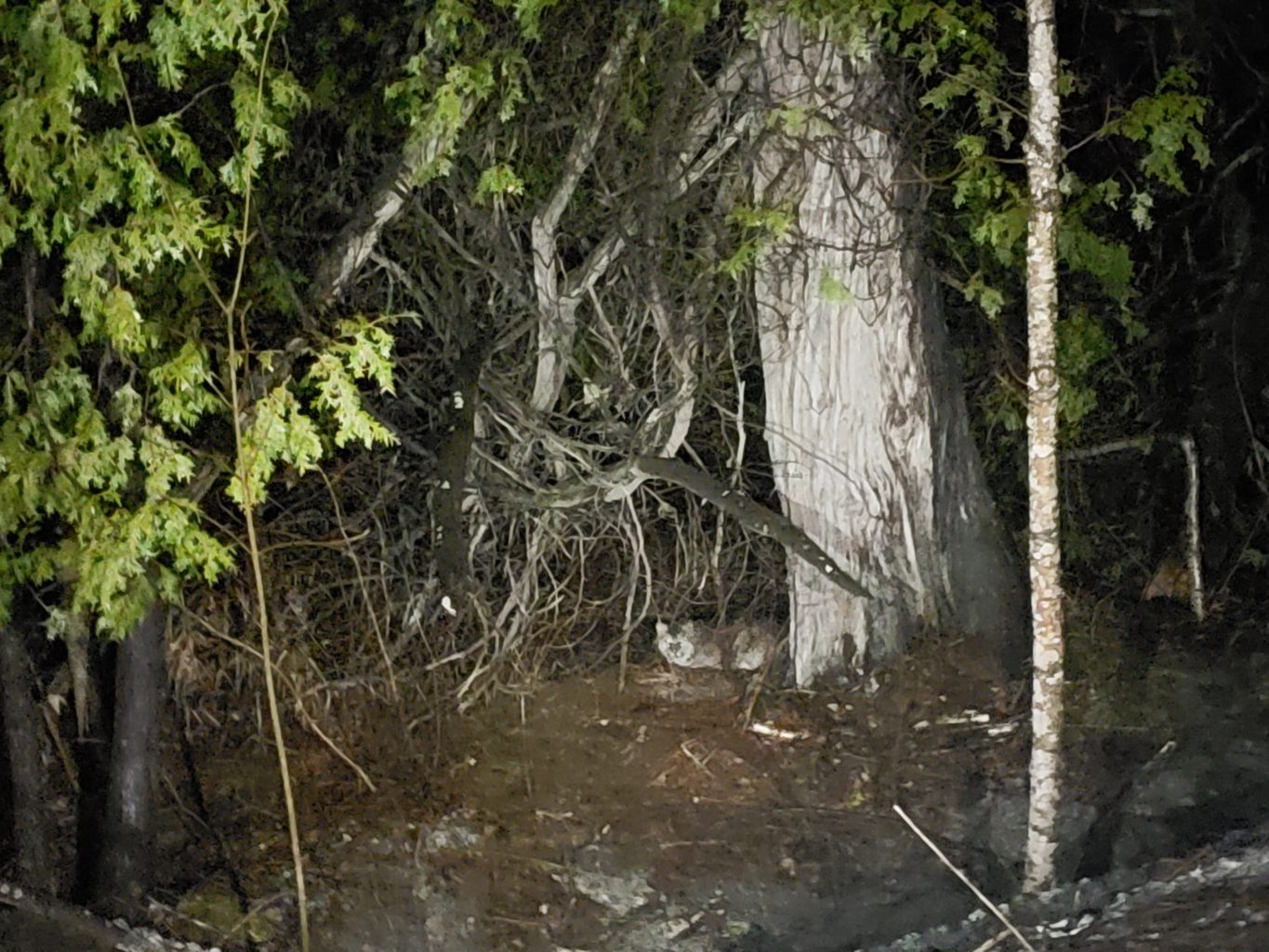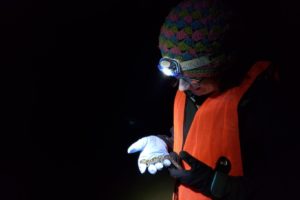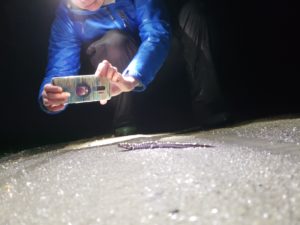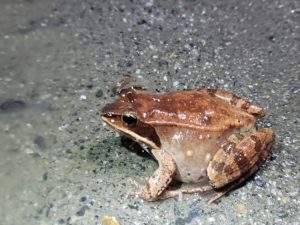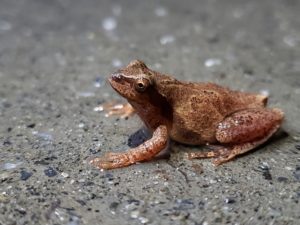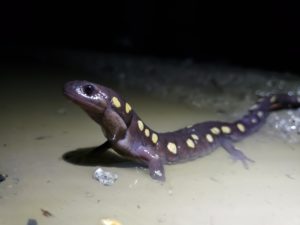Amphibian Road Crossing: Mid-season update
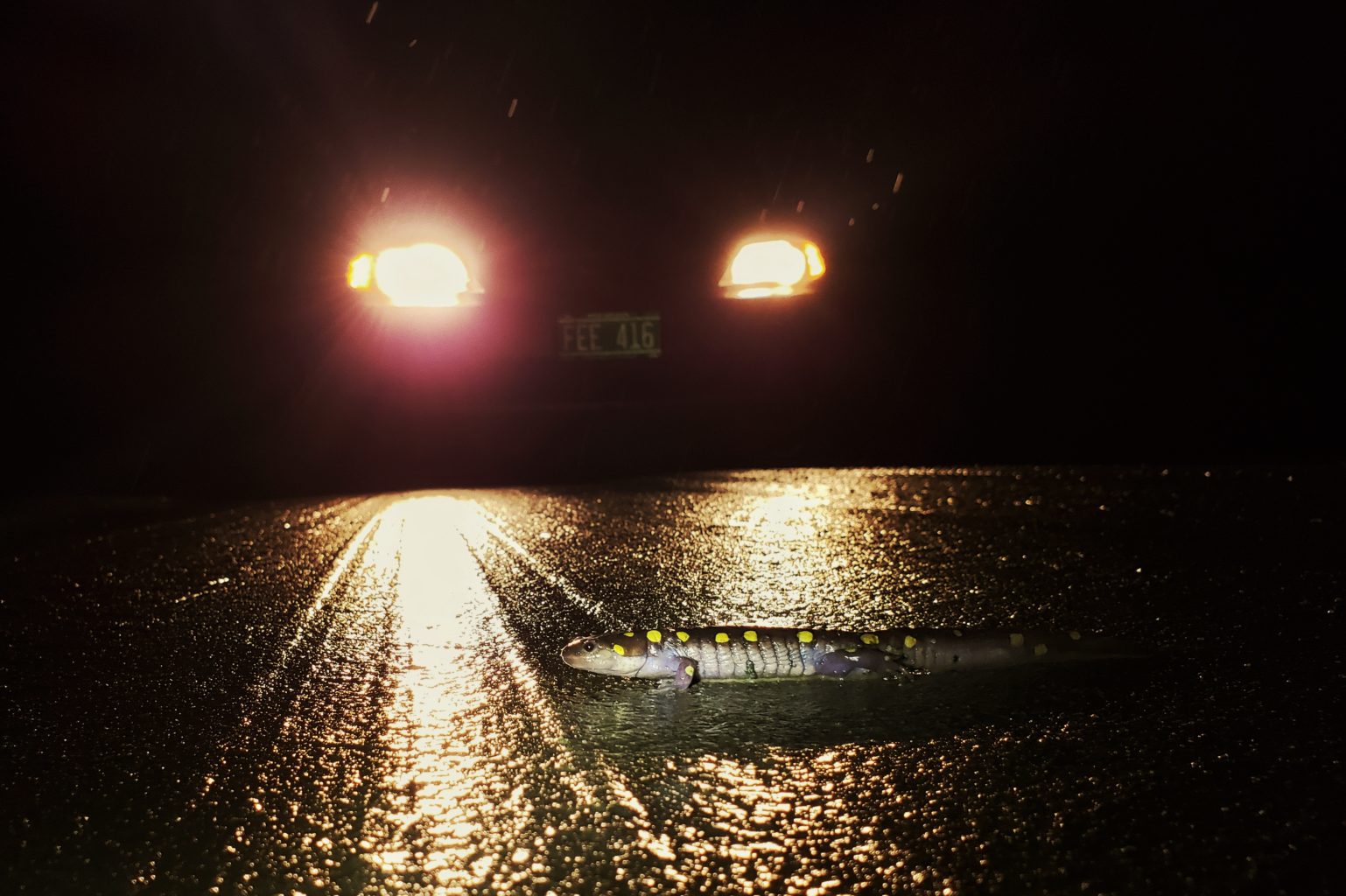
You know the old adage: April showers bring -- amphibian migrations! (Well, May flowers too, but those come later). During the warm evening rains last week our Amphibian Road Crossing volunteers documented frogs and salamanders on the move from Cornwall and Colchester to Calais and Craftsbury. Braving chilly and wet conditions, volunteers donned boots, raincoats, and safety vests and ventured out to crossing sites near them to help amphibians safety traverse roads and to collect important data on their migration. We have over 50 volunteers this spring, and we (and the amphibians) owe them a big thank you!
What's the most unexpected species recorded so far this year? Check out the photo at the end of this post to find out!
Some of our earliest migrants this spring were Blue-spotted Salamanders, seen crossing in New Haven back on March 21st. Last week big numbers of Spotted Salamanders, Wood Frogs, and Spring Peepers were seen throughout the state. There are still a few weeks left of spring migration; sites in colder hollows and the Northeast Kingdom will likely have movement through the first couple weeks of May. As the numbers of early migrants wind down, Eastern Newts, American Toads, and Gray Treefrogs will start to pick up.
Here are our mid-season totals so far:
Spotted Salamanders: 215 live, 35 dead
Jefferson Salamanders: 2 live
Eastern Newt: 17 live, 16 dead
Wood Frog: 169 live, 59 dead
Spring Peeper: 286 live, 141 dead
American Toad: 11 live
Four-toed Salamander: 1 live, 3 dead
Blue-spotted Salamander: 32 Live, 2 dead
Volunteer time: 35 hours
If you live near a busy amphibian crossing, try to avoid driving through it on warm, raining evenings in early spring when amphibians are likely to be moving. While driving more slowly seems like it would help, salamanders still struggle to get out of the way of traffic at any speed. Some amphibians, such as cryptic Wood Frogs, rely on camouflage to avoid predators. They are extremely difficult to see on a rainy, puddled roadway, and may actually freeze in the middle of the road when cars approach. If you do come across an area with large numbers of amphibians on the road, please report on our website so we can send volunteers out to monitor it.
To learn more about the Amphibian Road Crossing program, or to volunteer, visit our website: https://northbranchnaturecenter.org/amphibian-conservation/
And enjoy these video clips of our amphibians and their rescuers in action.
And our most unusual sighting of the year?
A bobcat!
Was this elusive feline also aware of this amphibian crossing site? Photographed in Berlin, VT
